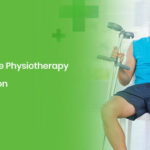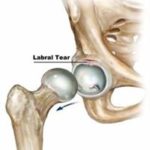Is Needling Physiotherapy the Relief Your Muscles Need?
Picture this: a skilled physiotherapist inserts ultra-fine needles into specific trigger points in your muscle tissue. Doesn’t sound like your average massage, right? That’s because it’s not. This approach, often called dry needling, goes straight to the source of tension, aiming to deactivate tight muscle knots and restore movement faster than traditional methods.
But wait what does needling do in physiotherapy?
It’s simple. Those tiny needles create a twitch response in your muscle fibers, helping reset and relax the area. In short, it’s like hitting the reset button on muscular tension and inflammation without drugs or surgery. Pretty neat, huh?
Think Needling Physiotherapy Might Ease That Muscle Pain?
Let’s be honest muscle tightness can be a total buzzkill. Whether you’re an athlete, desk jockey, or someone who just woke up on the wrong side of the bed, lingering tension can wear you down. That’s where needling physiotherapy steps in.
Why People Are Swapping Stretching for Needles:
- Pinpoint Precision: Targets the exact muscle giving you grief
- Fast Recovery: Many feel relief after just one or two sessions
- Non-Invasive: No meds, no downtime, no drama
- Boosted Mobility: Looser muscles mean smoother moves
- Chronic Pain Support: Especially for stubborn back, neck, and shoulder pain
Still not convinced? Well, let’s peel back the layers a bit more…
The Surprising Benefits of Needling Physiotherapy
Don’t let the needle part fool you. This therapy isn’t about pain it’s about unlocking relief. So what are the needling physiotherapy benefits people rave about.
1. Rapid Muscle Release
Knotted-up muscle groups relax almost instantly once the trigger point is hit. It’s like tension melts away.
2. Improved Circulation
Needles stimulate blood flow to targeted areas, which helps reduce inflammation and speed up healing.
3. Enhanced Range of Motion
Got stiff shoulders or a cranky lower back know more, Dry needling can help you move like your old self again.
4. Natural Painkiller Boost
By stimulating nerve pathways, dry needling encourages your body to release endorphins your built-in painkillers.
Dry Needling vs Acupuncture: What’s the Difference?

Ah, the age-old question dry needling vs acupuncture, aren’t they the same thing? Not quite.
- Philosophy: Acupuncture is rooted in traditional Chinese medicine, focusing on energy flow (Qi). Dry needling is based on Western science and anatomy.
- Technique: Both use thin needles, but dry needling targets muscle trigger points. Acupuncture follows meridian lines.
- Purpose: Dry needling treats muscle dysfunction and pain. Acupuncture addresses energy imbalances and overall wellness.
Bottom line: while they may look similar on the surface, their intent and execution are worlds apart.
Any Downsides? Let’s Talk Dry Needling Side Effects
Now, no treatment is totally without risk. So, what are the dry needling side effects you should know?
Common (and Minor) Side Effects:
- Muscle soreness (like post-workout pain)
- Slight bruising at the needle site
- Temporary fatigue or lightheadedness
Rare (but Possible):
- Infection (if hygiene is neglected so always go to a certified professional)
- Nerve irritation (usually resolves on its own)
So, as long as you’re in trained hands, dry needling is generally safe and well-tolerated.
FAQs
Is needling physiotherapy painful?
Not really! You might feel a twitch, mild ache, or a bit of pressure, but it’s usually tolerable. Some even describe it as oddly satisfying.
How long does a session last?
Typically 15–30 minutes, depending on the number of areas being treated. It’s quick and fits easily into a busy schedule.
How many sessions will I need?
This varies per person, but many feel noticeable relief after just one or two sessions. Chronic issues might need a few more.
Can I do other physiotherapy along with dry needling?
Absolutely. In fact, combining dry needling with manual therapy or exercises often speeds up recovery.
How quickly does needling work?
Needling often provides relief within 24 to 48 hours, though some people feel improvement immediately after the session.
Conclusion: Needles Might Just Be Your New Best Friend
Let’s face it when muscle pain gets in the way of your daily hustle, you need a solution that works fast and sticks. That’s why needling physiotherapy is catching fire. It’s direct, science-backed, and surprisingly effective. Sure, it might sound a bit edgy at first, but once you feel the results? You’ll wish you’d tried it sooner.
So, whether you’re recovering from an injury, battling nagging tension, or just plain tired of feeling stiff maybe it’s time to give those tiny needles a shot (pun intended). After all, your muscles deserve more than just a quick stretch. They deserve real relief.










